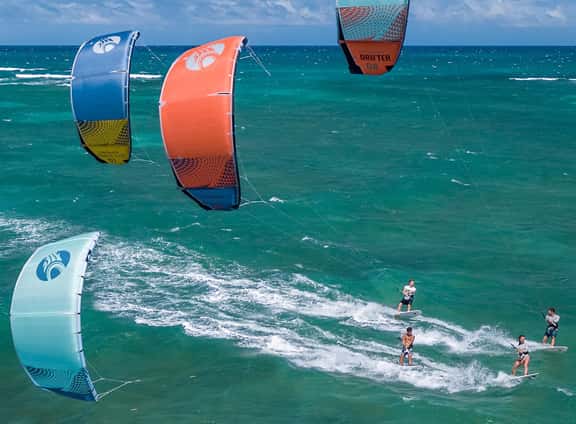Kiteboarding is an exhilarating watersport that combines elements of surfing, windsurfing, and wakeboarding. Whether you’re just starting or looking to refine your skills, understanding essential techniques can make a significant difference in your performance. This guide covers crucial kiteboarding techniques every rider should know to master the sport and enjoy a safe and thrilling experience.
1. Body Dragging
Body dragging is one of the first skills every kiteboarder should master. It helps you navigate the water without the board and is essential for retrieving a lost board. Practice upwind and downwind body dragging by positioning your body correctly and using the kite to pull yourself in the desired direction.
2. Water Start
Mastering the water start is key to getting up on the board and riding effectively. Begin by positioning your kite at a 45-degree angle, with your board in front of you. As you dive the kite into the power zone, apply pressure to your back foot and gradually rise onto the board. This technique requires practice but is fundamental for progressing in kiteboarding.
3. Edge Control
Edge control is crucial for maintaining balance and direction while riding. To achieve proper edge control, shift your weight onto your heels or toes and use the edge of your board to carve through the water. This technique allows you to control speed, direction, and stability during your ride.
4. Upwind Riding
Riding upwind efficiently is an essential skill that allows you to explore the water freely without drifting downwind. To ride upwind, position your kite at an angle that provides enough power while maintaining an edge with your board. Keep your body posture aligned and maintain a steady stance to stay on course.
5. Jumping
Jumping is an exciting skill that requires precise control of the kite and board. Start by building enough speed and edging hard upwind. Then, send the kite up while pushing down on the back foot to launch yourself into the air. Timing and control are key to landing smoothly.
6. Transitions
Smooth transitions between riding directions are crucial for maintaining flow in your sessions. To perform a transition, gradually shift your weight, steer the kite to the opposite side, and switch your stance smoothly. Practicing different types of transitions can enhance your riding style.
7. Self-Rescue
Knowing how to perform a self-rescue is vital for staying safe in unexpected situations. If you find yourself far from shore or in challenging conditions, use your kite to navigate back by wrapping the lines and using it as a flotation device to return safely.
8. Controlling Kite Power
Understanding how to control kite power is crucial for adapting to changing wind conditions. Use the depower system to adjust the kite’s power according to your needs. This allows for better control, reducing the risk of accidents and improving overall performance.
9. Riding in Different Conditions
Kiteboarding in varying wind and wave conditions requires adaptability. Practice riding in light winds, strong gusts, and choppy waters to develop a versatile skill set. Being able to adjust your stance and kite positioning accordingly will make you a more confident rider.
10. Mastering Turns
Executing efficient turns can enhance your riding experience. Whether performing a carve turn or a sliding transition, focus on fluid kite movements and board control to maintain speed and direction.
By mastering these essential kiteboarding techniques, riders can enhance their skills and fully enjoy the sport. If you’re looking to take your skills to the next level, consider visiting the renowned Kitesurfen in El Gouna spots, which offer ideal conditions for beginners and experienced riders alike. For those eager to try out a different challenge, Wing Foil in El Gouna is another exciting water sport to explore.

